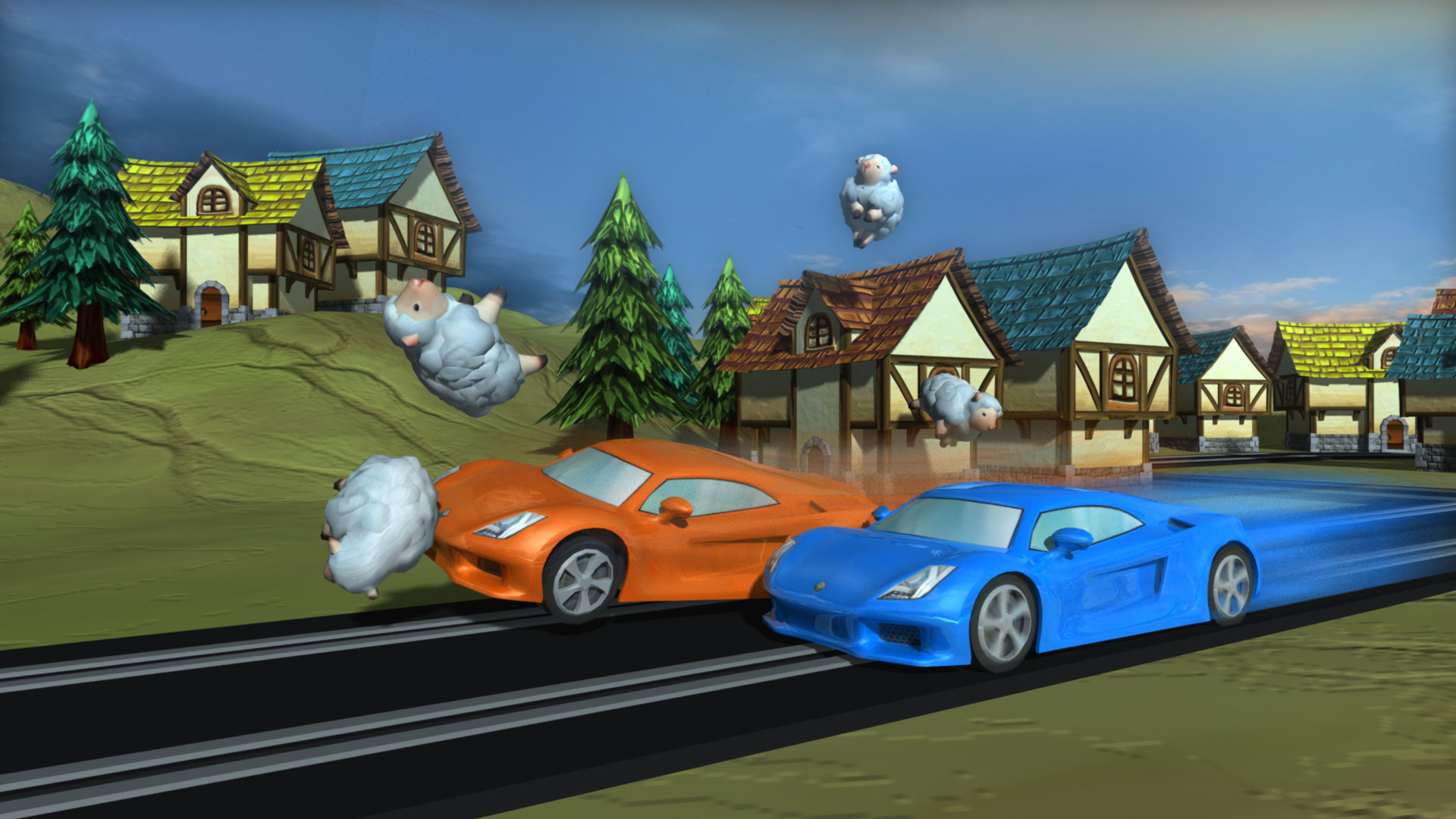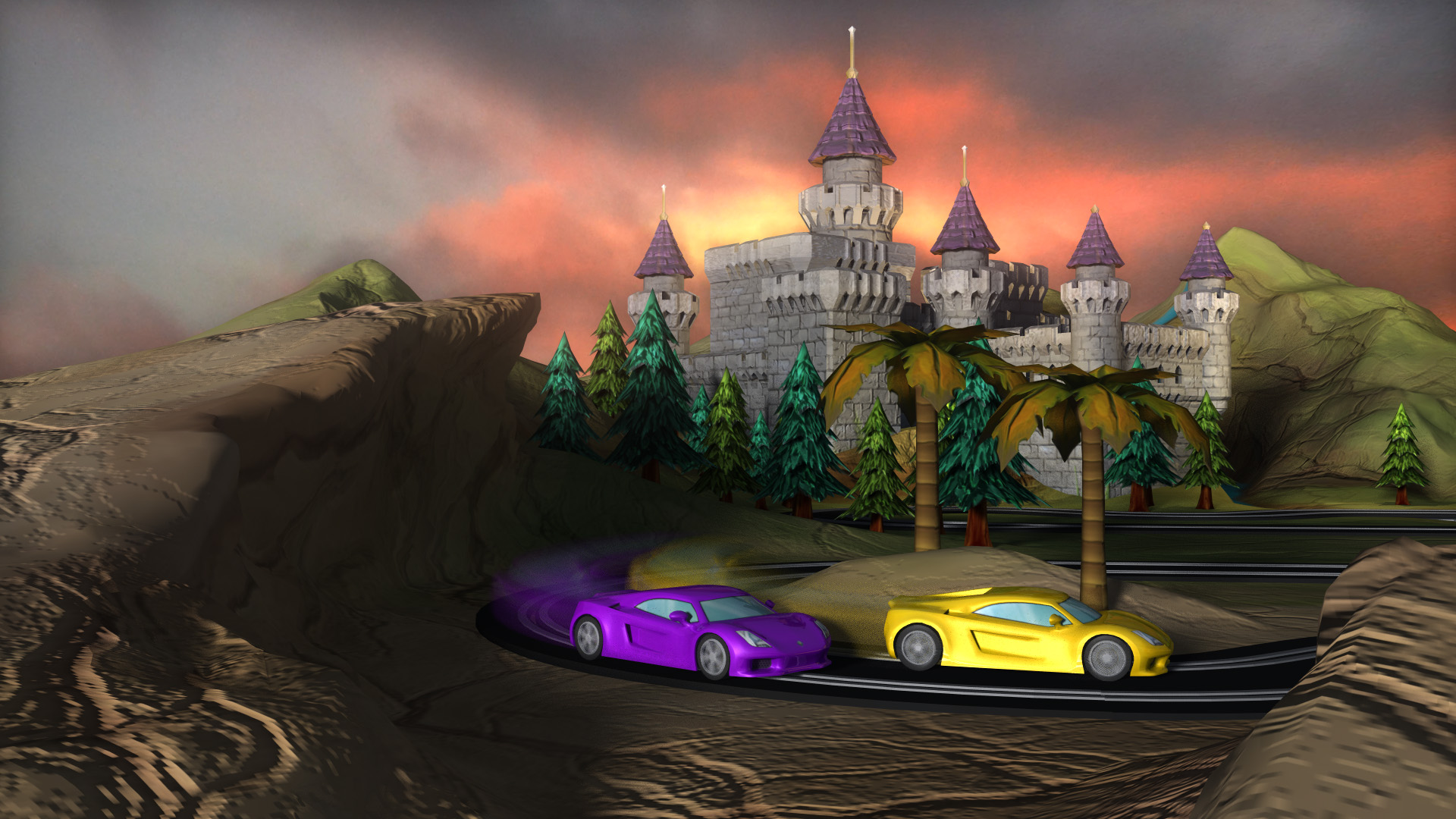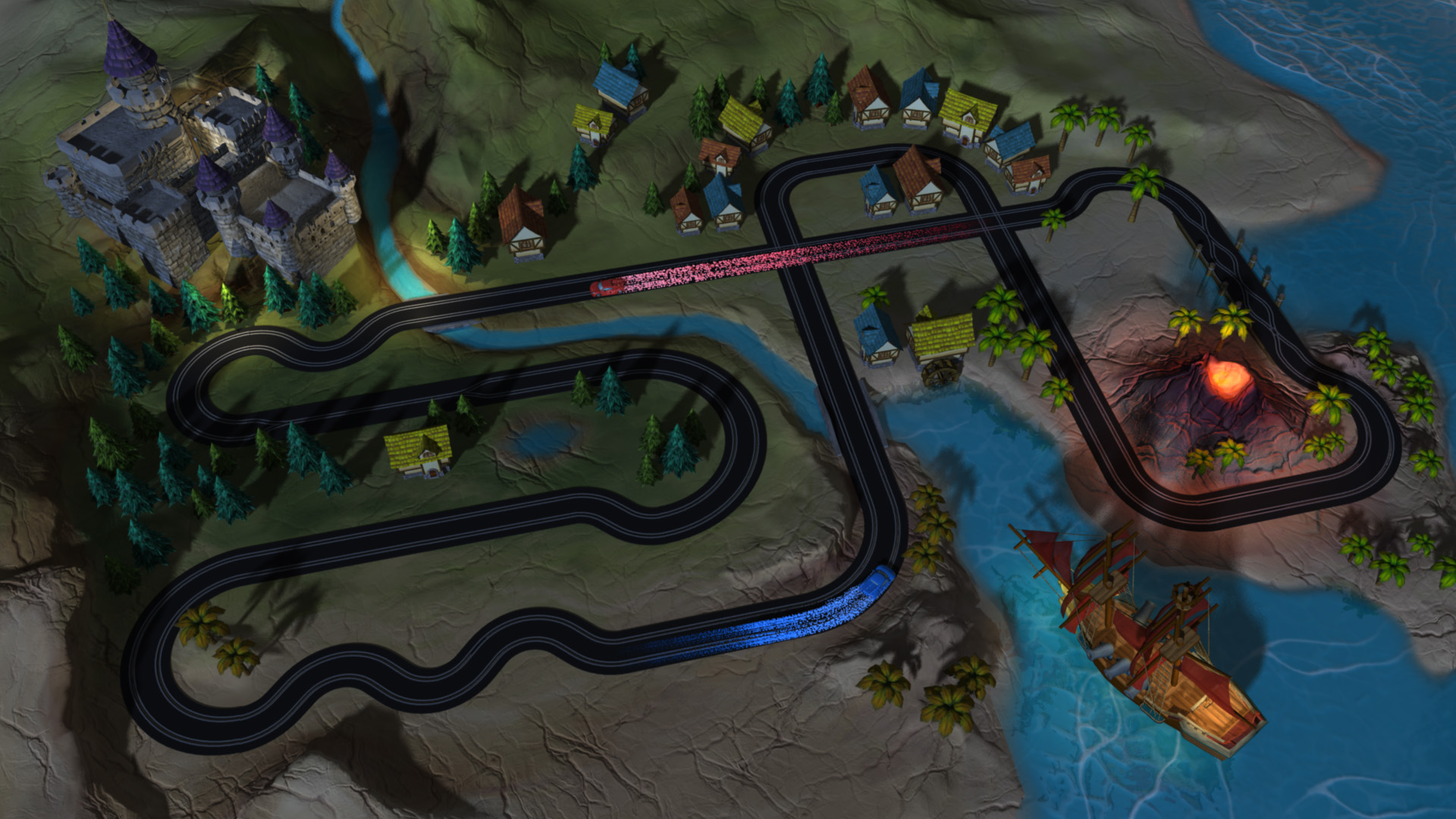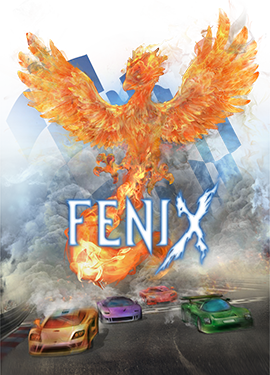







Slot Car Island was developed by a team of eight students at Carnegie Mellon's Entertainment Technology Center for the Office of the Chief Creative Officer at Electronic Arts. The standing order was to revive an old EA IP, hence our development name Fenix, but this gave rise to another project entirely.
They wanted content for a new streaming platform, and slot car racing was thought to be the perfect fit for their target audience. It is simple and family friendly, trafficking in the nostalgia of pre-digital play. The basic input of a one button control scheme and a static overhead camera fit their technological constraints and minimized usability concerns.
The question that we had to answer was how to turn this toy into a compelling video game. The basic premise was exactly that - extremely straightforward. But the further we got from a literal interpretation, the more interesting it became. Instead of being a digital version of the toy, the game came to represent what a child imagines when playing with toys - the slot car premise important only as it offers simplified racing mechanics and a launching point for smashing things together.
The major turning point was our crash prototype. Our concept artist massed out the island with poly primitives in place of houses and trees. Seeing those pieces explode off the screen as cars flew from the track made it clear that crashing was every bit as important as racing - and probably more fun. On top of that, crashes were prominent in most marketing and memories of slot car racing.
"Find Your Sheep in Every Game"
Initially this was not a very interesting project, but crashes were a chance to breathe unpredictable life into otherwise straightforward and static interactions. Our focus shifted from the cars and their attributes, to the environment and filling it with hazards that would make driving a generic vehicle interesting. As artist and animator, it became my responsibility to develop these details.
It wasn't until I began work on the sheep that this idea really clicked for me, that I found the fun from both a production and a gameplay standpoint. Crashing into these bleating blobs gave the game playfulness that was missing from what I originally imagined. And it didn't exceed the threshold of acceptable cartoon violence, with funny sounds and fluffy wool minimizing the impact of being launched into a volcano. Laughter from playtesters indicated that we were cultivating the right tone.
Some of the more intricate collision behaviors didn't make the final cut because they introduced excess chaos. Trees remained rooted but swayed elastically when hit, buildings broke into pieces, and a retributive ram was to punish players for plowing through flocks of sheep, but we found it best to unify collisions under a simpler physics model. Any more complex interactions would be centered on a single object that could act as a catch up mechanism - in the case of this track, a pirate ship firing cannonballs at the leading racer.
Completing the Circuit
The success of the game depended on a lot of little details coming together at the end. Many of these last minute additions were saved from the Viking boat, our destination for cancelled tasks and cut features, which would be consumed by funerary fire once the project was over. It was intentionally cathartic, but also an important reminder of the things we still wanted in the game. Much of what was good in the end had been reclaimed from this doomed vessel.
These late additions made for a much more vivid game, increasing richness suddenly and clarifying wordlessly. For example, the day-night cycle added drama and communicated progress. The light trails made it easier to track the cars, but also suggested speed and indicated a leader. The pirate ship's allegiance was shown by changing its sails, and presented strategic choices not native to an on-rails experience.

Slot Car Island proved to be a hit with our target demographic. When we conducted our final playtest at a physical slot car track, parents had to rip their kids away from the game and remind them to finish their tournament. EA was so happy with the result that they purchased our IP to continue development internal to the OCCO, expanding on our formula with more themes and tracks.
My Role: 3D Art & Animation, Visual ID Project Cycle: 15 Weeks
The Team: Mingxun "CMX" Chong (Gameplay Programming) // Taku Nishino (Production) // Tim Rosko (Music & Sound Effects) // Aubrey Scott (Tools Programming, AI) // Yang Shi (Gameplay Programming) // John Shields (Design) // Jiayue Yu (Concepts, 2D Art & UI) //
Advisors: Dave Culyba // Melanie Lam
